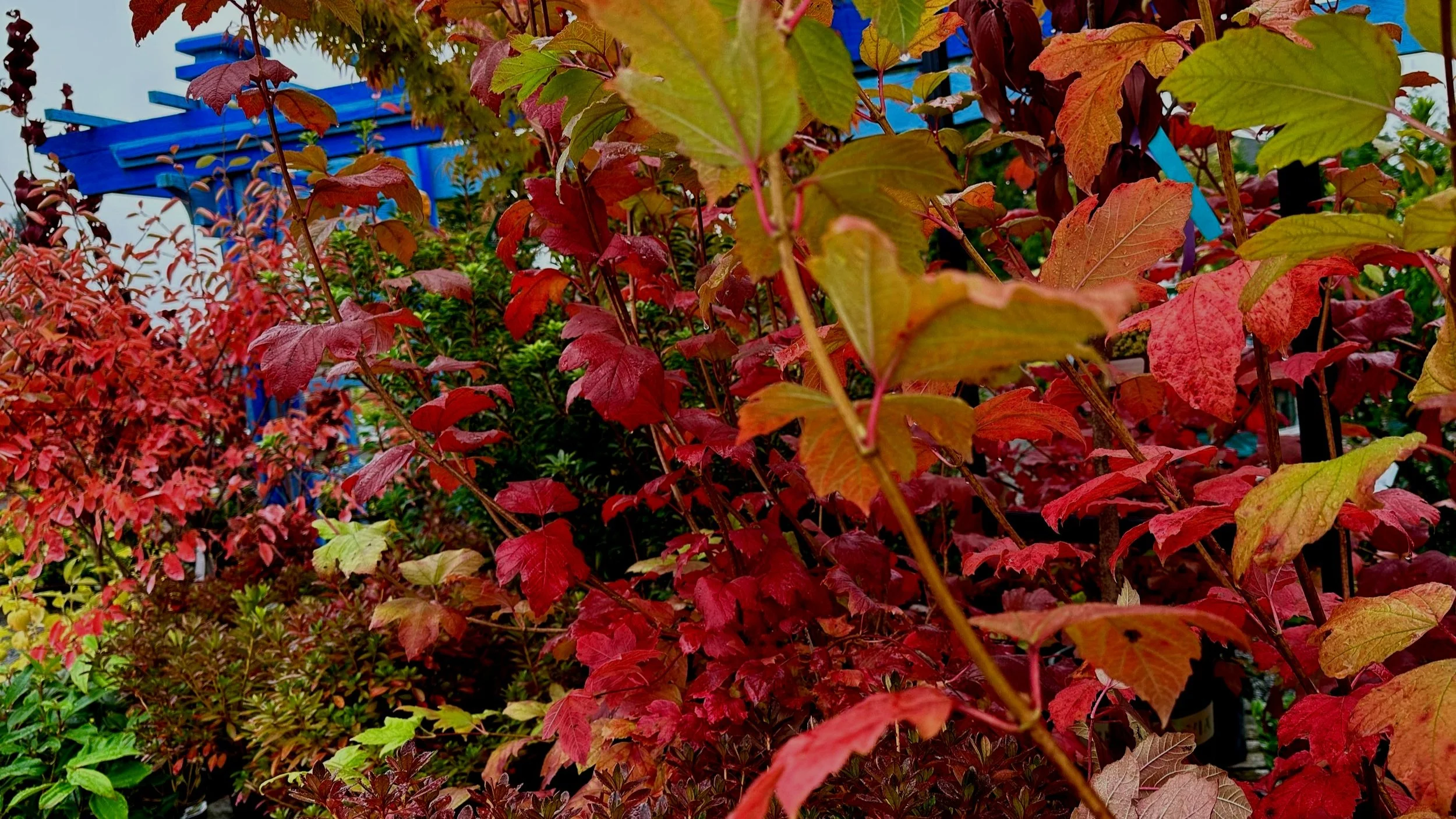Albert Camus, the French philosopher that developed Absurdism once said: “Autumn is a second spring when every leaf is a flower.” While Albert didn’t attach any meaning to this annual event (since according to Albert everything is meaningless), at least he recognized that fall color is a pleasant experience that reminds us of the flowers of spring. I certainly can’t begin to explain “why” fall color happens, but I can explain “how” it happens. Here are the nuts and bolts of fall color…
Plant leaves contain the following pigments:
Chlorophyll: this gives our leaves their green color
Xanthophyll: think of yellow leaves
Carotenoids: these produce the lovely oranges and even browns
Anthocyanins: this is where the dark reds and purples come from
In most leaves chlorophyll is the dominate pigment, although the others can be present but “invisible” due to the predominance of chlorophyll. For various reasons, as we move into the fall and the days become shorter, plants slow down and eventually stop producing chlorophyll. As the chlorophyll disappears, the other pigments start to magically appear and we start to see the brilliant colors of fall. While the carotenoids are almost always hiding in the leaves, for some reason the anthocyanins are only produced in the fall (unless the plant normally has purple leaves during the season).
The intensity of fall color is controlled by several factors, including weather, nutrition, soil moisture, stress and genetics. Warm, sunny days and cool nights in the fall typically produce the best fall color. Plants that are under stress due to drought will usually color up first and drop their leaves first, before happy plants, but their colors may not be as dramatic. Plants that are over-fertilized and not allowed to slow down in the fall will often have poor fall color, if at all (and can potentially be damaged by early frosts). When plants are well cared for during the growing season they will usually provide us with the best fall colors. Genetics, of course, trump all of these environmental factors to the extent that a Quaking Aspen will always have golden yellow fall color and a Raywood Ash will always be dark purple.
There is a physiological process that takes place in the fall that involves sugars, carbohydrates and abscission layers that affects how bright the colors will be and when the leaves will fall off, but suffice it to say that the end result is that we get to enjoy some lovely fall displays. How long those colorful leaves hang on is again a function of weather and genetics. Oakleaf Hydrangeas, for example, are already dark purple and will continue to hold their leaves past the first of the year and sometimes all the way into February (unless we get an arctic blast). Pin oak leaves will turn brown in the fall and not fall off until the new leaves push them out of the way in spring. Ginko leaves are just now starting to turn a bright yellow and within a week or two will all fall off at one time, in a matter of hours. Obviously, if we get an early storm all of these leaves can fall off prematurely.
So there are lots of variables that determine how bright our fall colors will be and how long those colors will stick around - some of it is genetic and some of it is environmental. Either way, what is most important is to just enjoy it and make sure that our own gardens have a good representation of fall color plants.



